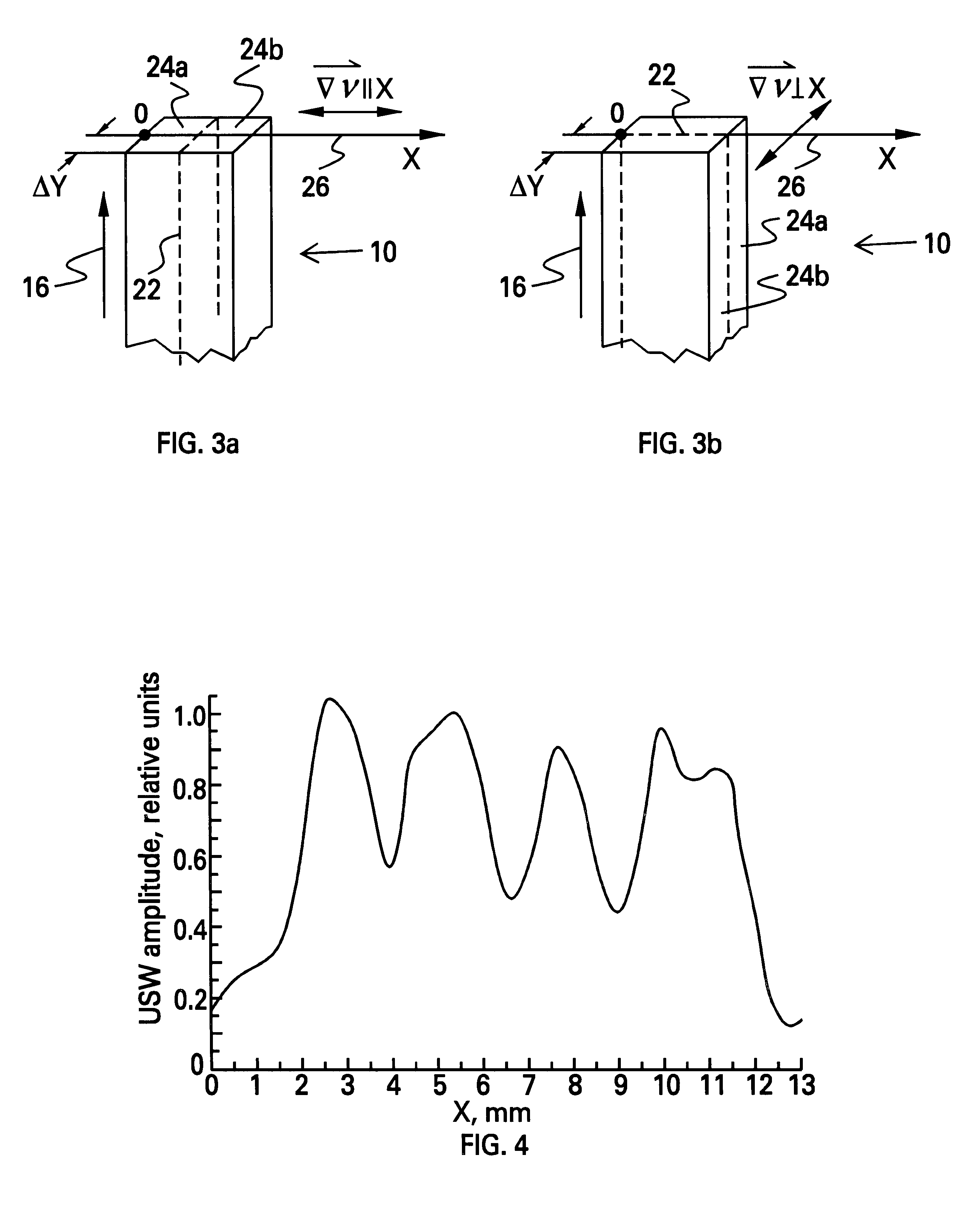Manipulation of acoustic waves using a functionally graded material and process for making the same
a functional graded material and acoustic wave technology, applied in the direction of sound producing devices, instruments, transmission, etc., can solve the problems of high capital investment and time-consuming, restricting choice, and reducing the ability to generate specific property gradients as a function of thickness
- Summary
- Abstract
- Description
- Claims
- Application Information
AI Technical Summary
Benefits of technology
Problems solved by technology
Method used
Image
Examples
example
A piece of homogeneous glass (12.times.12.times.60 mm), a cemented biaxial (12.times.12.times.60 mm), and a fused biaxial (12.times.12.times.20 mm) were tested for the ultrasonic wave (USW) intensity across the thickness (essentially the focusing behavior). The acoustic velocity gradients were obtained by fusion / diffusion of base glasses with the material properties listed in the Table below. The homogeneous glass is glass B in the Table, while the cemented and fused biaxials each comprise two monoaxial slabs of glass of three layers each, fused and diffused (glasses A, B, and C). Glasses A, B, and C are each commercially-available lead silicates.
The two axial gradient pieces were joined along their low acoustic velocity faces, providing a high-low-high slab for focusing USW. A 14 MHz transducer 14 was used for sending the USW into the material. The detector 18 for sensing the USW intensity was moved along the gradient direction 12.
The samples were prepared as follows: For making an...
second embodiment
FIGS. 3a and 3b schematically illustrate the scanning of the sample butt-end by the USW detector 18 in two directions for the biaxial gradient slabs 10. In one embodiment, cement layer 22 was used to join two separate glass pieces 24a, 24b to form the slab 10. In a second embodiment, the two separate glass pieces 24a, 24b were joined along the interface 22 by fusing them together. The detector 18 moved in the direction denoted 26. In FIG. 3a, the detector 18 was moved such that the gradient direction of the acoustic velocity, .gradient..sub..nu. +L , was parallel to the X-direction. In FIG. 3b, the detector 18 was moved such that .gradient..sub..nu. +L was perpendicular to the X-direction. .DELTA.Y is the shift of the detector 18 from the sample butt-end edge.
FIG. 4 depicts the USW amplitude measured along the X-direction for the homogeneous glass B. .DELTA.Y was 6 mm. In this case, there was considerable symmetry in the USW intensity about the central plane, as seen in Curve 28. Th...
PUM
 Login to View More
Login to View More Abstract
Description
Claims
Application Information
 Login to View More
Login to View More - Generate Ideas
- Intellectual Property
- Life Sciences
- Materials
- Tech Scout
- Unparalleled Data Quality
- Higher Quality Content
- 60% Fewer Hallucinations
Browse by: Latest US Patents, China's latest patents, Technical Efficacy Thesaurus, Application Domain, Technology Topic, Popular Technical Reports.
© 2025 PatSnap. All rights reserved.Legal|Privacy policy|Modern Slavery Act Transparency Statement|Sitemap|About US| Contact US: help@patsnap.com



